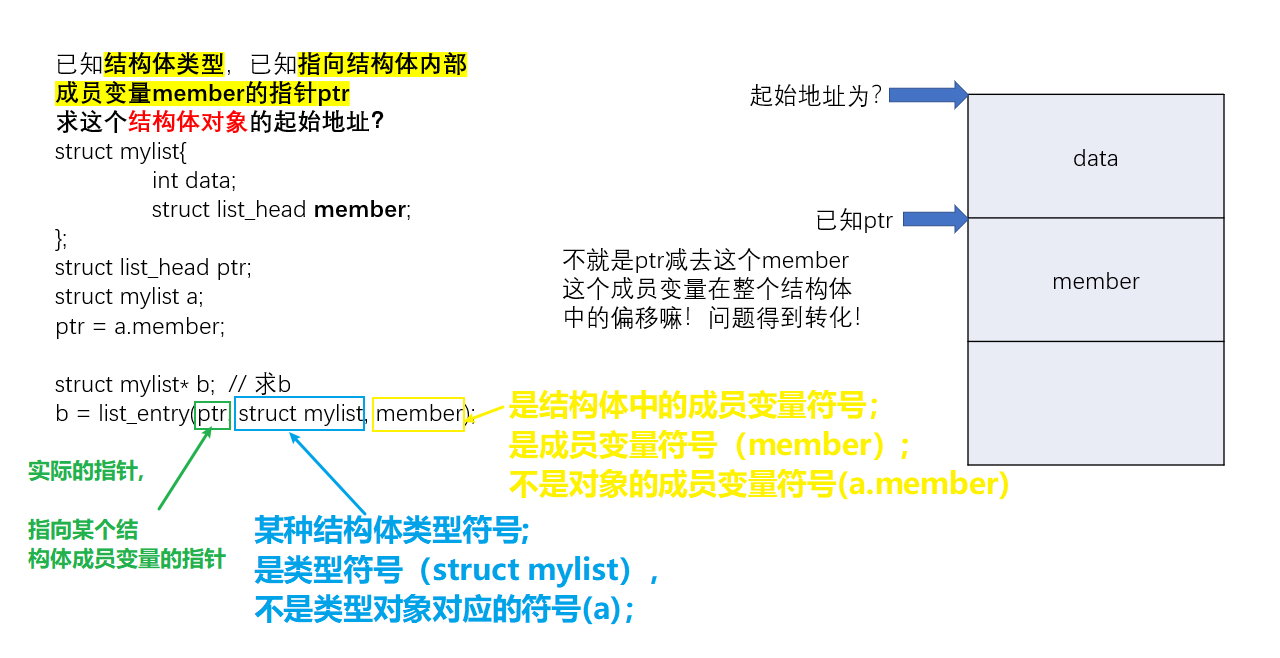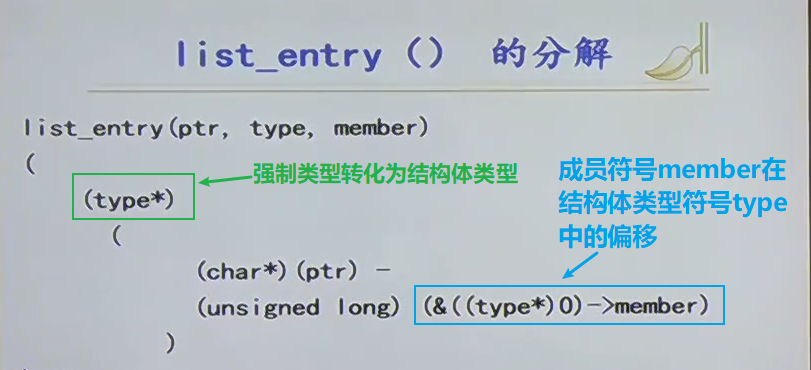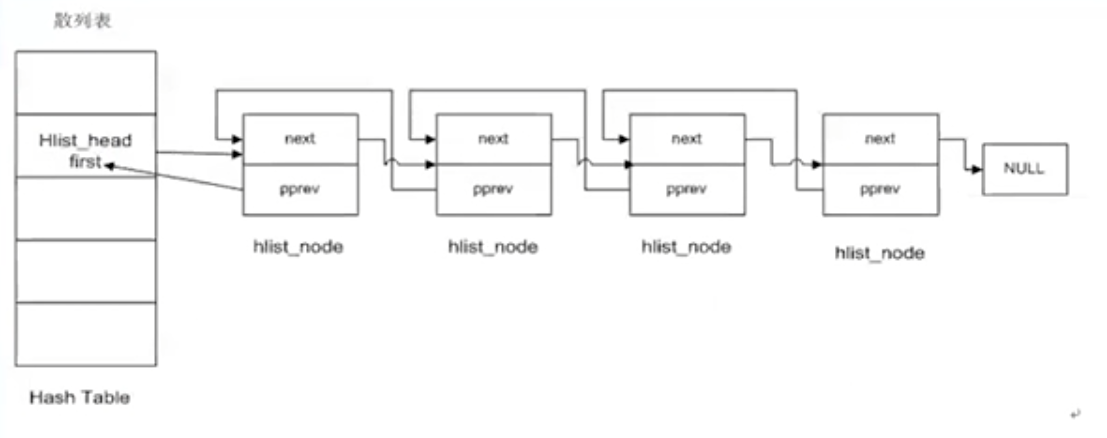阅读Linux源码,心得:
1.抽象,不要把问题想得复杂,Less Is More!
2.关注函数的参数的类型
1.Linux内核中的双链表结构
Linux内核对双链表的实现(在list.h中)方式与众不同,在链表中并不会包含数据,具体定义如下:
1 | struct list_head { |
为什么不包含数据域?
这体现了Linux内核的抽象的思想
这个结构常常被嵌入到其他结构中使用,比如:
1 | struct my_list{ |
由该双向链表可以衍生出各种不同的复杂数据结构。
1.1 Linux内核链表的声明、初始化
1 | // 仅初始化链表 |
1.2 Linux内核链表之插入
Linux内核中两个插入函数
static inline void list_add() // 在链表头插入,实现了栈功能
static inline void list_add_tail() // 在尾部插入,实现了队列功能
Linux内核又对上述两个函数进行了抽象,编写了static inline void __list_add(struct list_head* new, struct list_head* prev, struct list_head* next)
1 | static inline void __list_add(struct list_head* new, struct list_head* prev, struct list_head* next) |
1.3 Linux内核链表之删除
来看Linux内核的设计,请关注函数的参数,为什么要这么设计?
1 | static inline void __list_del(struct list_head*prev, struct list_head* next) |
注意:使用Iist_del()时,会将所要删除的节点(假设此时是pos节点)的next和prev指向一个固定的值,所以想要通过pos = pos->next访问下一个链表节点是不可能的,就会导致页错误,因为LIST_POISON1(2)是宏定义的一个不可访问的地址。
1.4 Linux内核链表之遍历
1 |
|
pos是定义的一个struct list_head结构的指针,head是所要遍历的链表头,如何通过pos找到链表中每个节点的起始位置,从而访问节点中的每个元素?
2
3
4
int data;
struct list_head list_member;
};


2.Linux内核中的哈希表
对比双链表,哈希表有两种节点,一种是hlist_head、另一种是hlist_node
1 | struct hlist_head { |

